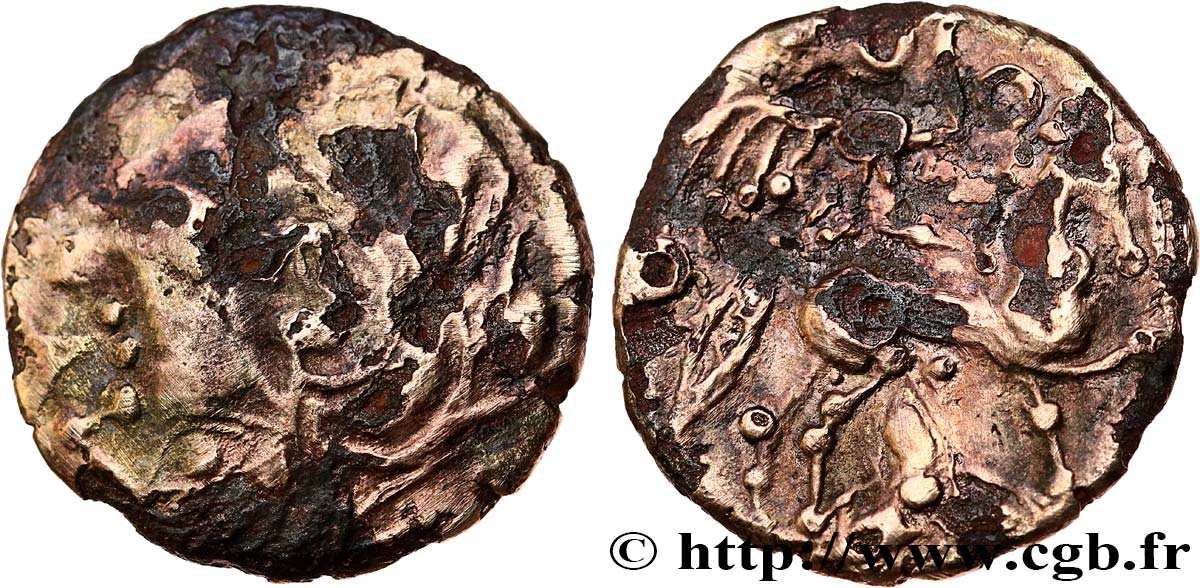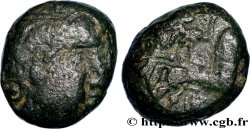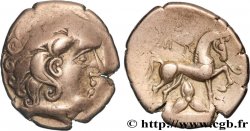bga_714796 - GALLIA - LEMOVICES (Regione di Limoges) Statère à la grue
275.00 €
Quantità
Aggiungi al carrello

Tipo : Statère à la grue
Data: c. 100-50 BC.
Nome della officina / città: Limoges (87)
Metallo : elettro
Diametro : 17,5 mm
Asse di coniazione : 7 h.
Peso : 3,09 g.
Grado di rarità : R2
Commenti sullo stato di conservazione:
Monnaie bien centrée, avec une jolie tête au droit et une belle iconographie au revers
N° nelle opere di riferimento :
Diritto
Titolatura diritto : ANÉPIGRAPHE.
Descrittivo diritto : Tête à droite, la chevelure en grosses mèches aquitaniques.
Rovescio
Titolatura rovescio : ANÉPIGRAPHE.
Descrittivo rovescio : Cheval à droite, une grue posée sur la croupe et un trèfle entre les jambes.
Commento
Cette variété correspond à la classe II de la série 1076 “à la grue et au trèfle” du Nouvel Atlas.
Le motif d‘accolade partant de la bouche, devant le visage, est parfois interprété comme le signe de la parole ; on retrouve ce détail sur les statères des Bituriges, mais aussi sous forme des deux dauphins, plus ou moins stylisés, sur la plupart des monnaies d’argent du sud, dites “à la croix”.
This variety corresponds to class II of series 1076 “with the crane and the clover” of the New Atlas. The hug pattern starting from the mouth, in front of the face, is sometimes interpreted as the sign of speech; we find this detail on the staters of the Bituriges, but also in the form of the two dolphins, more or less stylized, on most of the silver coins of the south, known as “the cross”
Le motif d‘accolade partant de la bouche, devant le visage, est parfois interprété comme le signe de la parole ; on retrouve ce détail sur les statères des Bituriges, mais aussi sous forme des deux dauphins, plus ou moins stylisés, sur la plupart des monnaies d’argent du sud, dites “à la croix”.
This variety corresponds to class II of series 1076 “with the crane and the clover” of the New Atlas. The hug pattern starting from the mouth, in front of the face, is sometimes interpreted as the sign of speech; we find this detail on the staters of the Bituriges, but also in the form of the two dolphins, more or less stylized, on most of the silver coins of the south, known as “the cross”








 Segnalare un errore
Segnalare un errore Stampate la pagina
Stampate la pagina Condividi mia selezione
Condividi mia selezione Fai una domanda
Fai una domanda Consegnare / vendere
Consegnare / vendere
 Descrittivo
Descrittivo










